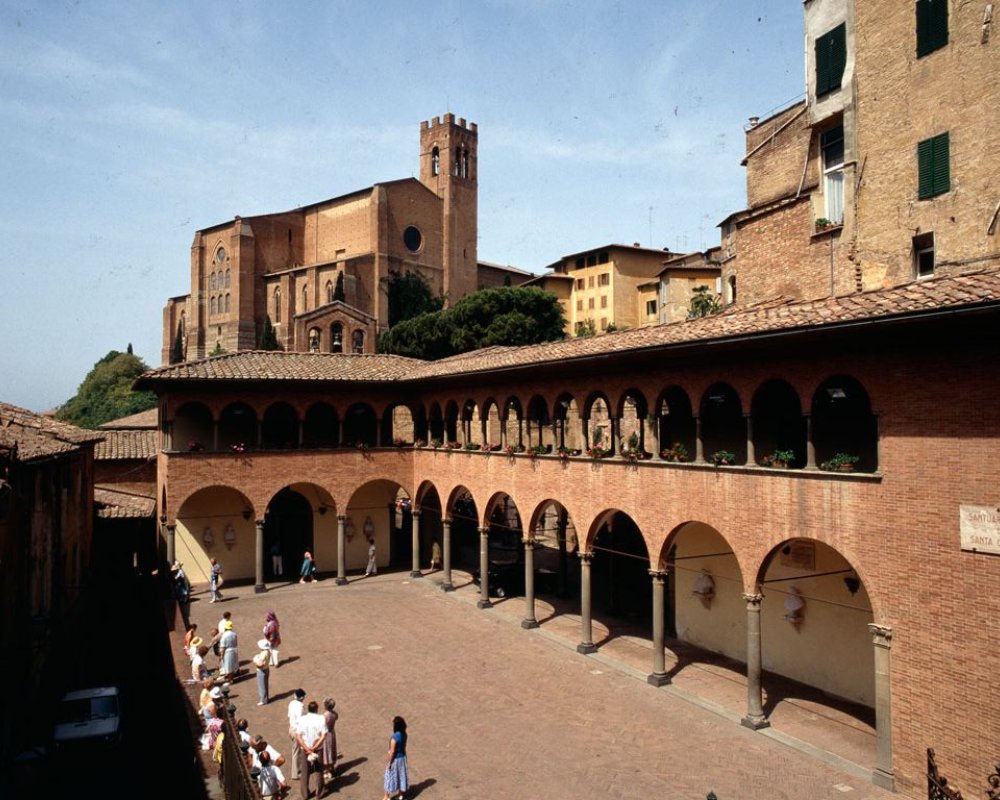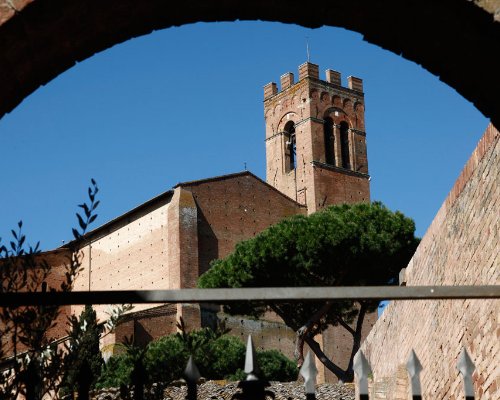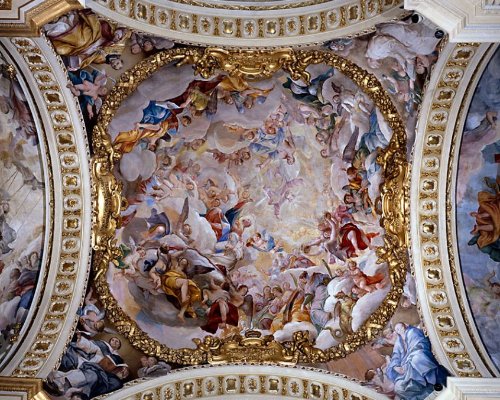A journey through art and faith in the symbolic places of the city
You need no excuse to visit Siena, the city of the Palio and Panforte. Indeed, straddling the Via Francigena, it has always been a point of reference for wayfarers and pilgrims, a pearl to discover and admire in all its beauty.
To explore Siena from an unusual perspective, you can follow in the footsteps of St. Catherine and come to know the symbolic places of the city via an accessible pedestrian route.
The first stop of the journey is the imposing, Gothic Basilica of San Domenico, closely connected to the figure of Catherine, who lived some of the most famous moments of her extraordinary mystical experience inside its walls. In the chapel dedicated to her you can see the most important of her relics, the holy head.
The first stop of the journey is the imposing, Gothic Basilica of San Domenico, closely connected to the figure of Catherine, who lived some of the most famous moments of her extraordinary mystical experience inside its walls. In the chapel dedicated to her you can see the most important of her relics, the holy head.
The Sanctuary house of St. Catherine is a complex that allows you to feel the intimacy of her person in her birthplace, enriched over the centuries by artworks and transformed into a true shrine: visiting the various rooms allows you to get an idea of the saint's origins and upbringing.
The Sanctuary house of St. Catherine is a complex that allows you to feel the intimacy of her person in her birthplace, enriched over the centuries by artworks and transformed into a true shrine: visiting the various rooms allows you to get an idea of the saint's origins and upbringing.
Also found in the area where Caterina was born is the oldest of the city's fountains, a place of tremendous importance for the Sienese people of the time: apart from supplying the citizens with water, it facilitated numerous activities and industries, like the dye-works of Catherine's father.
Even today the bottini testify to the extraordinary network of underground aqueducts, painstakingly dug into the rock. They get their name from the fact that they were overlayed with barrel vaults - botte meaning barrels, which were sometimes used to nourish the springs, wells and cisterns.
Also found in the area where Caterina was born is the oldest of the city's fountains, a place of tremendous importance for the Sienese people of the time: apart from supplying the citizens with water, it facilitated numerous activities and industries, like the dye-works of Catherine's father.
Even today the bottini testify to the extraordinary network of underground aqueducts, painstakingly dug into the rock. They get their name from the fact that they were overlayed with barrel vaults - botte meaning barrels, which were sometimes used to nourish the springs, wells and cisterns.
The salita del Costone was the scene of Catherine's first vision, which came to her at the age of only seven, an event that would leave a profound mark on her future life. The memory of this vision is kept in the fresco by the painter Giuseppe Nicola Nasini, which decorates the way.
The salita del Costone was the scene of Catherine's first vision, which came to her at the age of only seven, an event that would leave a profound mark on her future life. The memory of this vision is kept in the fresco by the painter Giuseppe Nicola Nasini, which decorates the way.
The Baptistery of San Giovanni is a sacred building of huge interest, annexed to the cathedral. Catherine was baptised here, as all Sienese were for centuries. On one of the steps that lead up to the higher piazza del Duomo, a little cross marks the place where the saint fell during her temptation by a demon.
The Baptistery of San Giovanni is a sacred building of huge interest, annexed to the cathedral. Catherine was baptised here, as all Sienese were for centuries. On one of the steps that lead up to the higher piazza del Duomo, a little cross marks the place where the saint fell during her temptation by a demon.
Our journey ends at the Oratory of Santa Caterina della Notte, found in the heart of the thousand-year old Hospital of Santa Maria della Scala. It's an impressive place, where Catherine prayed and did penitence together with the brothers of the historic company of San Michele Archangelo. On the left-hand side of the oratory you find a narrow cell where she rested after tending to the hospital's patients.
Our journey ends at the Oratory of Santa Caterina della Notte, found in the heart of the thousand-year old Hospital of Santa Maria della Scala. It's an impressive place, where Catherine prayed and did penitence together with the brothers of the historic company of San Michele Archangelo. On the left-hand side of the oratory you find a narrow cell where she rested after tending to the hospital's patients.


